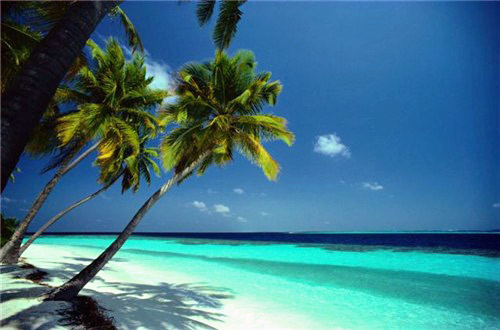Booklet Pane: Love the Bailiwick (Guernsey 2014)
Love the Bailiwick (Guernsey 2014)
30 July (Guernsey ) within release Love the Bailiwick goes into circulation Booklet Pane Love the Bailiwick face value 10*GY No Face Value
| Booklet Pane Love the Bailiwick in catalogues | |
|---|---|
| Stanley Gibbons: | Sg: GG 1525b |
Booklet Pane is square format.
Contains SG nrs 1525 to 1529 each x2 With information label at centerAlso in the issue Love the Bailiwick:
- Stamp - The Little Chapel face value GY;
- Stamp - Bec du Nez face value GY;
- Stamp - Torteval Church face value GY;
- Stamp - Moulin Huet face value GY;
- Stamp - St Peter Port Harbour face value GY;
- Stamp - Fisherman's Beach, Herm face value UK;
- Stamp - Creux Harbour, Sark face value UK;
- Stamp - Fort Essex, Alderney face value UK;
- Stamp - Vazon Bay, Guernsey face value UK;
- Stamp - Petit Bot, Guernsey face value UK;
- Booklet - Guernsey Cow face value 10*GY;
- Booklet Pane - Love the Bailiwick face value 10*GY;
- Booklet Pane - Love the Bailiwick face value 10*GY;
- Booklet Pane - Love the Bailiwick face value 10*UK;
- Booklet Pane - Love the Bailiwick face value 10*UK;
- Booklet - Vazon Bay face value 10*UK;
- Se-tenant - Love the Bailiwick face value 5*GY+5*UK;
Booklet Pane Love the Bailiwick it reflects the thematic directions:
Animals are multicellular, eukaryotic organisms of the kingdom Animalia (also called Metazoa). All animals are motile, meaning they can move spontaneously and independently, at some point in their lives. Their body plan eventually becomes fixed as they develop, although some undergo a process of metamorphosis later on in their lives. All animals are heterotrophs: they must ingest other organisms or their products for sustenance.
A beach is a landform alongside a body of water which consists of loose particles. The particles composing a beach are typically made from rock, such as sand, gravel, shingle, pebbles, etc., or biological sources, such as mollusc shells or coralline algae. Sediments settle in different densities and structures, depending on the local wave action and weather, creating different textures, colors and gradients or layers of material.
Cattle (Bos taurus) are large, domesticated, bovid ungulates widely kept as livestock. They are prominent modern members of the subfamily Bovinae and the most widespread species of the genus Bos. Mature female cattle are called cows and mature male cattle are bulls. Young female cattle are called heifers, young male cattle are oxen or bullocks, and castrated male cattle are known as steers.
A church building, often simply called a church, is a building used for Christian religious activities, particularly worship services. The term in its architectural sense is most often used by Christians to refer to their religious buildings, but it is sometimes used (by analogy) for buildings of other religions. In traditional Christian architecture, the church is often arranged in the shape of a Christian cross. When viewed from plan view the longest part of a cross is represented by the aisle and the junction of the cross is located at the altar area. Towers or domes are often added with the intention of directing the eye of the viewer towards the heavens and inspiring church visitors. Modern church buildings have a variety of architectural styles and layouts; many buildings that were designed for other purposes have now been converted for church use; and, similarly, many original church buildings have been put to other uses. The earliest identified Christian church was a house church founded between 233 and 256. During the 11th through 14th centuries, a wave of building of cathedrals and smaller parish churches occurred across Western Europe. A cathedral is a church, usually Roman Catholic, Anglican, Oriental Orthodox or Eastern Orthodox, housing the seat of a bishop.
Mammals are any vertebrates within the class Mammalia (/məˈmeɪli.ə/ from Latin mamma "breast"), a clade of endothermic amniotes distinguished from reptiles (including birds) by the possession of a neocortex (a region of the brain), hair, three middle ear bones and mammary glands. All female mammals nurse their young with milk, secreted from the mammary glands. Mammals include the largest animals on the planet, the great whales. The basic body type is a terrestrial quadruped, but some mammals are adapted for life at sea, in the air, in trees, underground or on two legs. The largest group of mammals, the placentals, have a placenta, which enables the feeding of the fetus during gestation. Mammals range in size from the 30–40 mm (1.2–1.6 in) bumblebee bat to the 30-meter (98 ft) blue whale. With the exception of the five species of monotreme (egg-laying mammals), all modern mammals give birth to live young. Most mammals, including the six most species-rich orders, belong to the placental group. The largest orders are the rodents, bats and Soricomorpha (shrews and allies). The next three biggest orders, depending on the biological classification scheme used, are the Primates (apes and monkeys), the Cetartiodactyla (whales and even-toed ungulates), and the Carnivora (cats, dogs, seals, and allies).
A port is a maritime facility comprising one or more wharves or loading areas, where ships load and discharge cargo and passengers. Although usually situated on a sea coast or estuary, ports can also be found far inland, such as Hamburg, Manchester and Duluth; these access the sea via rivers or canals. Because of their roles as ports of entry for immigrants as well as soldiers in wartime, many port cities have experienced dramatic multi-ethnic and multicultural changes throughout their histories






